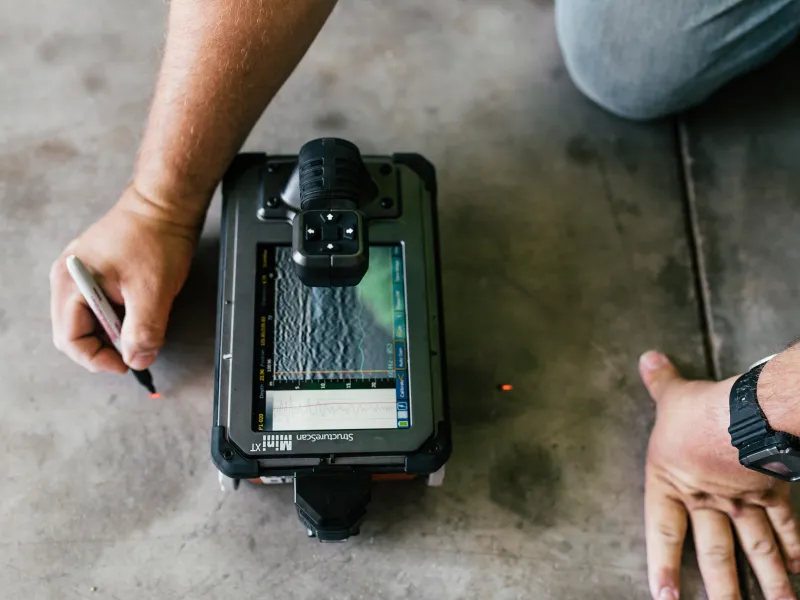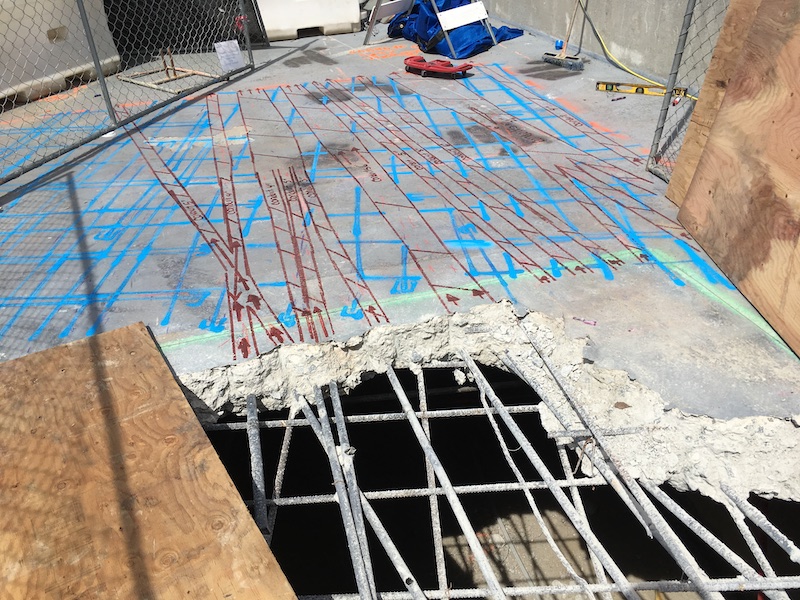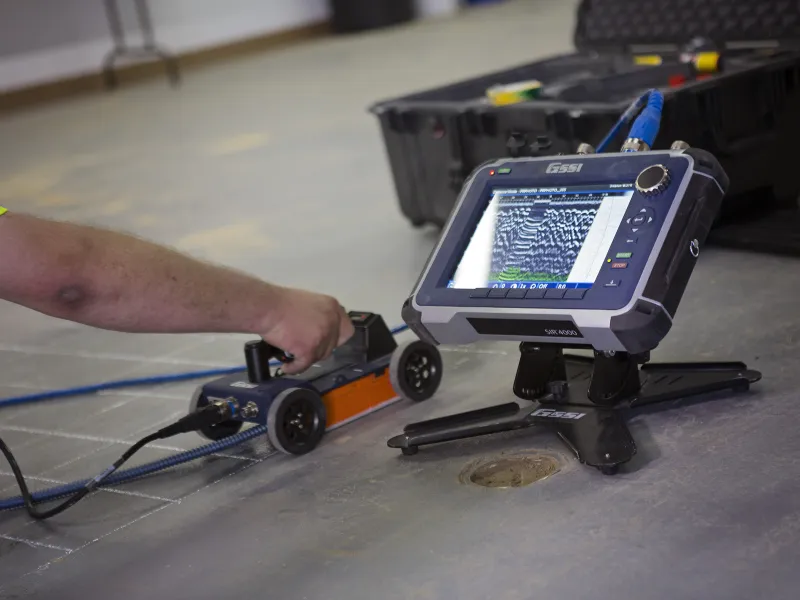The Importance of Expert Concrete Scanning Services
Wiki Article
Reveal the Transformative Power of Concrete Scanning in Making The Most Of Efficiency and Safety
Concrete scanning has arised as a crucial device in the building industry, using unparalleled advantages in enhancing project effectiveness and ensuring security requirements. The transformative power of concrete scanning exists in its capacity to offer real-time data and comprehensive understandings, revolutionizing just how jobs are planned and executed.Value of Concrete Scanning
Making certain the architectural stability and safety and security of building and construction jobs starts with the important step of carrying out complete concrete scanning. Concrete scanning is a non-destructive method utilized to identify and map subsurface elements within concrete structures. This process is necessary in identifying potential threats, such as rebar, post-tension cables, and conduits, that may be hidden within the concrete. By making use of advanced modern technologies like ground-penetrating radar (GPR) and electro-magnetic induction, construction groups can accurately locate these components without creating any damages to the structure.The significance of concrete scanning can not be overemphasized, as it plays a vital role in preventing accidents, lessening job delays, and ensuring the lasting resilience of the construction. By identifying possible threats prior to the building and construction phase begins, builders can execute ideal safety and security measures and make educated decisions concerning the layout and execution of the job. In addition, concrete scanning aids in optimizing project timelines and budget by preventing unexpected expenses and hold-ups that might arise because of unexpected blockages within the concrete. Eventually, spending in detailed concrete scanning is a positive approach that enhances both performance and security in construction projects.
Just How Concrete Scanning Functions
Concrete scanning operates as a vital tool in building and construction tasks by utilizing advanced technologies to identify and map subsurface aspects without creating architectural damages. Ground Permeating Radar (GPR) and Electromagnetic Induction (EMI) are 2 primary techniques made use of in concrete scanning.Throughout the scanning process, the information collected is examined in real-time, allowing instant identification of possible threats or barriers under the surface area. By employing these sophisticated technologies, concrete scanning dramatically reduces the threat of costly damages and injuries on building websites.
Advantages of Concrete Scanning
One of the key advantages of concrete scanning is the capacity to find and locate ingrained things such as rebar, post-tension cable televisions, and conduits precisely. Concrete scanning helps in planning and designing extra properly, as it offers specific information concerning the location and deepness of structural elements.
Study: Concrete Scanning Success

In another situation, a building and construction company used 3D concrete scanning to examine the problem of maturing concrete frameworks in a historic building. The in-depth scans supplied important understandings into the extent of degeneration and assisted prioritize upkeep go to this web-site efforts properly. By proactively resolving areas of worry identified with scanning, the business had the ability to extend the life-span of the structure and make certain passenger safety and security.
These case studies highlight the transformative power of concrete scanning in enhancing efficiency, precision, and safety and security in construction tasks.
Carrying Out Concrete Scanning in Projects
Implementing innovative scanning technologies throughout building and construction jobs has actually ended up being significantly crucial for enhancing precision and safety and security. By incorporating concrete scanning right into project planning and execution, construction teams can identify potential risks, such as rebar or post-tension cable televisions, hidden within concrete frameworks. This positive strategy reduces the threat of crashes, delays, and expensive rework, ultimately leading to much more reliable task timelines and spending plans.To carry out concrete scanning properly, task managers need to work together carefully with knowledgeable scanning experts to establish one of the most appropriate scanning methods for the certain task needs. Engaging scanning professionals from the very early stages of a task enables the team to produce extensive scanning strategies that resolve crucial locations of issue and make certain detailed data collection.
Additionally, including concrete scanning right into regular job process can streamline a knockout post decision-making procedures, as real-time scan data provides prompt understandings right into the problem of concrete structures - Concrete Scanning. This data-driven technique assists in educated analytic and makes it possible for groups to make changes quickly, fostering a society of efficiency and safety and security throughout the project lifecycle

Verdict
Finally, concrete scanning plays an essential role in enhancing efficiency and safety and security in building tasks. By utilizing innovative modern technology to map and spot out underlying frameworks within concrete, this procedure assists to stop expensive blunders, make certain architectural honesty, and reduce risks on site. With the ability to reveal surprise components and supply exact information, concrete scanning verifies to be a beneficial device for maximizing task outcomes and maximizing overall success.Concrete scanning is a non-destructive method used to detect and map subsurface elements within concrete structures. Furthermore, concrete scanning aids in optimizing task timelines and spending plan by staying clear of unexpected costs and hold-ups that may occur due to unexpected blockages within the concrete. One remarkable instance research study entails a large remodelling click resources task where concrete scanning played a vital duty in making certain task success.In another instance, a construction company used 3D concrete scanning to evaluate the problem of aging concrete structures in a historical structure. By integrating concrete scanning into project preparation and execution, building groups can determine prospective dangers, such as rebar or post-tension cable televisions, hidden within concrete structures.
Report this wiki page